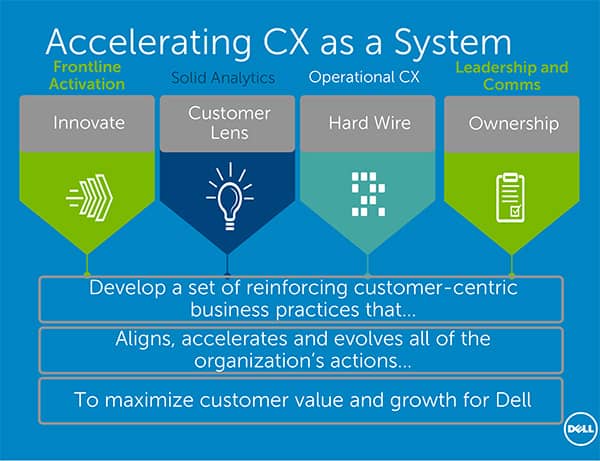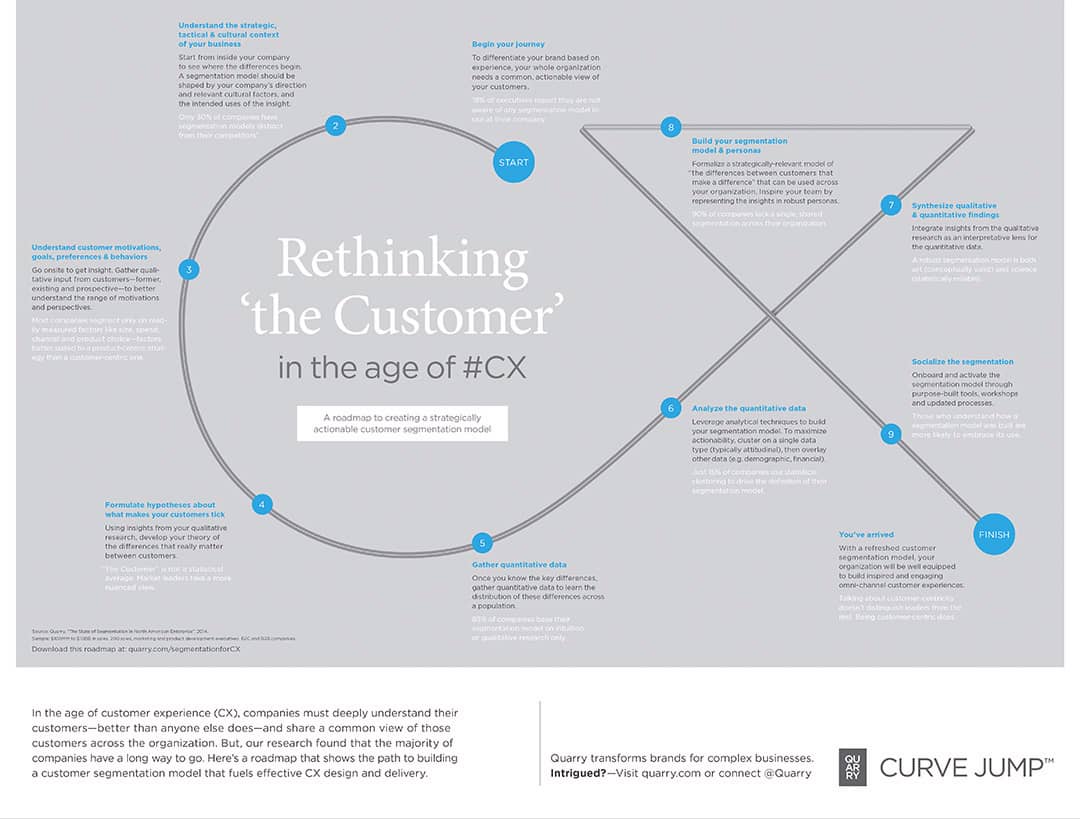
5 keys for unlocking customer-centricity
Leading companies are increasingly recognizing that to differentiate their brand in a sustainable and meaningful way they need to put buyers and customers at the center of everything they do: how they design and build products and services, how they market and communicate, how they sell and how they deliver support. Here are 5 keys to unlocking customer-centricity across your organization.
1. Understand customer experience is brand experience
To borrow Marshall McLuhan’s famous quote “the medium is the message” and adapt it for brand building, the new mantra is: “the experience is the brand.”
Cirque du Soleil offers a powerful example of this axiom in action. Everything the company does, from its actual shows to the pre-show and post-show experiences (e.g., ticket purchase, merchandising, direct marketing, call center), is designed to deliver on the promise to “invoke the imagination, provoke the senses and evoke the emotions” of its audience.
To get a good feel for the rich, multi-sensory Cirque du Soleil experience, check out this video.
What can other companies learn from Cirque du Soleil? Ensure all touch points between your company and your customer are designed and executed to deliver on the pillars of your brand. The brand is no longer just your name, logo or tagline. It’s the feelings customers associate with you based on the experiences you create.
2. Seek first to empathize
To create a customer experience that is meaningful for another human being, the experience should be both intellectually relevant and emotionally resonant. How do you get to relevance and resonance? Through empathy with your customers.
Here are several notable quotes and examples that speak to this imperative:
- Bruce Temkin (@btemkin) offers that “it’s not the total experience that, ultimately, matters, but rather what people remember about their experience that counts.” Understand what motivates people and create positive memories within their experience of your brand.
- Indigo Books and Music has an “Ideagora” where the company crowdsources ideas for how to better deliver on what people want and need. Indigo deliberately engages and listens to unhappy customers because they offer learning for Indigo and a path to innovation. For a look at Indigo’s The Idea Garden, check out this prezi-based presentation.

- Kohl’s redefined its collective purpose from “answering phones” to “tCop” (Taking Care of People). The cultural transformation initiative behind that purpose statement led to a dramatic improvement in customer and employee engagement levels as well as performance within the operation. Ask yourself what business you’re in, seeking to ensure that the customer is the ‘North Star’ of your compass and sets the direction for everything you do.
A key enabler for building customer empathy is developing and socializing actionable insights within your organization. Companies need to go beyond data and research, to formulating insights that can guide the design of strategies and tactics that will connect with customers. Quarry’s “Rethinking ‘the Customer’” roadmap shows a best practice-based process for getting to a strategically actionable view of customers, which is the first step on the road to empathy.
3. Build a culture of customer-centricity
Customer experience is not the responsibility of just a single department or a function; it’s the responsibility of anyone who has a direct or indirect influence on the experience that customers receive. And, because of that, the shift from being “product-centric” to “customer-centric” requires cultural change.
A great example comes from Dell where they look at customer experience as a system of relationships. Dell believes strongly that great employee engagement leads to producing better customer experiences, which leads to better financial outcomes. The company has developed a set of customer-centric business practices that span its operations—from front-line sales to manufacturing—and are all focused on maximizing value for customers. Here’s a key slide shared by John Lavorato, Vice President, Sales Operations at Dell during a 2015 keynote presentation:

Shred-It, the Canadian-based document management company, has so fully embraced the relationship between culture and the ability to deliver great customer experiences that it spent the first two years in its customer-centric journey focused on improving employee engagement, before seeking to enact significant improvements to the customer experience. One of the key initiatives the company undertook was creating an internal employee-facing brand around the concept of “Helpful Experts” that galvanized the employee base across Shred-It’s operations and led to massive improvements in customer retention from the low 70s to over 90%.
4. Use ‘design thinking’ to propel CX
A common concern and question among CX leaders is how to best engage, and achieve the buy in, of peers and decision makers within their organizations for CX-focused initiatives, given the perceived ‘fuzzy’ ROI of CX.
At Quarry, we’ve observed there is incredible value to be gained by using ‘Design Thinking’ to innovate in the interest of customers, while also responding to the data-driven mindset of so many organizations. As proof of how Design Thinking can lead to breakthrough CX initiatives that drive real improvements in financial outcomes, we’ve shared the case of our client Symantec’s Norton Lounge. You can view a presentation on this case on SlideShare.
Another great example comes from SKF Group—a $7.4 billion Swedish manufacturer of bearings and related products that has over 48,500 employees and operates in over 130 countries. The company’s six-stage process for discovery and development aligns with a Design Thinking approach. The process draws on a combination of creative ideation, experimentation, measurement and refinement, and has guided significant, positive changes to the experience that SKF delivers to its customers, while producing measurable gains for SKF’s business.
Integrating over 10,000 iOS devices into SKF’s processes was an outcome from SKF’s innovation efforts that has had a major impact on the efficiency and effectiveness of SKF’s business. Check out the business profile produced in partnership with Apple.
5. Use technology to enable—not drive—CX
In our technology-driven world, technology should support the delivery of a meaningful CX, but not be the driver of it. Companies need to design experiences that fit with customers’ needs, motivations and goals, then figure out what technologies can deliver that experience—rather than letting the experience be dictated by the features of a particular technology.
Again, Kohl’s offers a powerful example of this; when Kohl’s introduced its IVR (Interactive Voice Response) system within its call center, the IVR was the only pathway for connecting to a call center associate, and it would take four selections before a customer could get a live person on the phone. Plus, the queuing system had an average wait time of over two minutes. When Kohl’s talked with customers, they expressed frustration over the time it took to get a human on the phone and the ‘hoops’ they had to jump through to get to the associate. And, not only was the IVR impacting the customer experience, but it was also having a negative impact on the employee experience because associates had to deal with people who were frustrated from waiting several minutes before being connected.
Kohl’s made a simple but powerful change to its IVR process: it offered customers the option of being directed immediately to an associate or continuing through the IVR system. The impact on customer satisfaction—as well as employee engagement—was dramatic. Satisfaction scores increased because many customers were able to get to a resolution with a live associate quicker, and associates were, in turn, able to have more positive interactions with customers.
The customer experience movement is still in its early days. But, the shift is on. We hope these five key takeaways are helpful guideposts for your organization along its journey to customer-centricity.
Are there other keys you believe are critical for becoming more customer-centric? Join the conversation and let us know.
